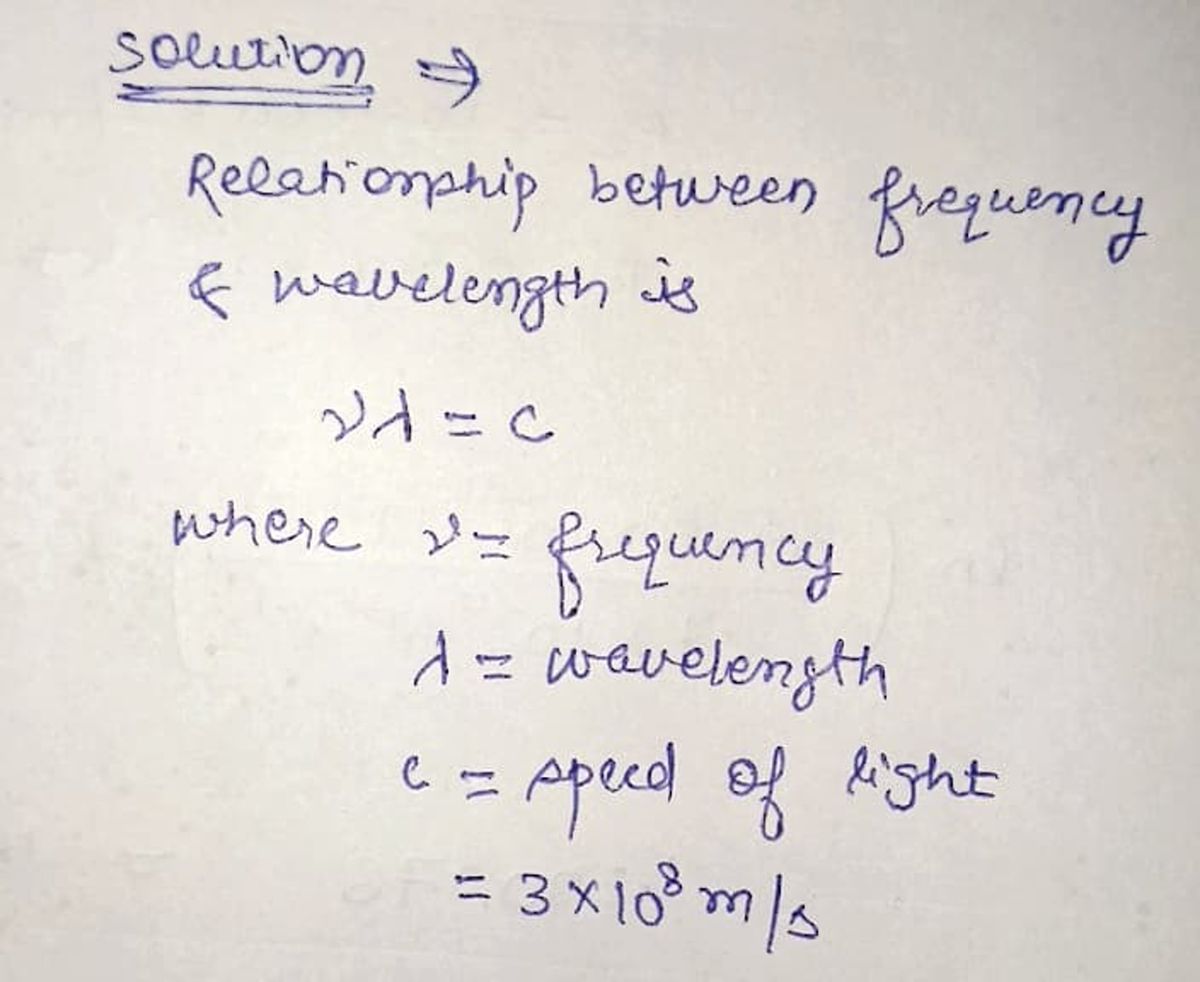NASA communicates with the Space Shuttle and International Space Station using Ku-band microwave radio. Suppose NASA transmits a microwave signal to the Space Shuttle using radio waves with a frequency of 16.GHz. Calculate the wavelength of these radio waves. Round your answer to 2 significant digits. mm X d
NASA communicates with the Space Shuttle and International Space Station using Ku-band microwave radio. Suppose NASA transmits a microwave signal to the Space Shuttle using radio waves with a frequency of 16.GHz. Calculate the wavelength of these radio waves. Round your answer to 2 significant digits. mm X d
Chemistry
10th Edition
ISBN:9781305957404
Author:Steven S. Zumdahl, Susan A. Zumdahl, Donald J. DeCoste
Publisher:Steven S. Zumdahl, Susan A. Zumdahl, Donald J. DeCoste
Chapter1: Chemical Foundations
Section: Chapter Questions
Problem 1RQ: Define and explain the differences between the following terms. a. law and theory b. theory and...
Related questions
Question

Transcribed Image Text:**Interconverting the Wavelength and Frequency of Electromagnetic Radiation**
**Educational Context:**
NASA communicates with the Space Shuttle and International Space Station using Ku-band microwave radio. Suppose NASA transmits a microwave signal to the Space Shuttle using radio waves with a frequency of 16.0 GHz. Calculate the wavelength of these radio waves.
**Instruction:**
Round your answer to 2 significant digits.
**Explanation of Components:**
- **Input Box:** Allows for the manual entry of the calculated wavelength in the appropriate unit (in this case, millimeters).
- **Calculator Tool:** Provides basic mathematical operations which can be used to perform necessary calculations.
**Additional Tools:**
- **Explanation Button:** Offers a detailed solution or guidance on how to arrive at the correct answer.
- **Check Button:** Validates the entered answer and provides feedback.
Expert Solution
Step 1: Formula to calculate wavelength

Step by step
Solved in 3 steps with 2 images

Knowledge Booster
Learn more about
Need a deep-dive on the concept behind this application? Look no further. Learn more about this topic, chemistry and related others by exploring similar questions and additional content below.Recommended textbooks for you

Chemistry
Chemistry
ISBN:
9781305957404
Author:
Steven S. Zumdahl, Susan A. Zumdahl, Donald J. DeCoste
Publisher:
Cengage Learning

Chemistry
Chemistry
ISBN:
9781259911156
Author:
Raymond Chang Dr., Jason Overby Professor
Publisher:
McGraw-Hill Education

Principles of Instrumental Analysis
Chemistry
ISBN:
9781305577213
Author:
Douglas A. Skoog, F. James Holler, Stanley R. Crouch
Publisher:
Cengage Learning

Chemistry
Chemistry
ISBN:
9781305957404
Author:
Steven S. Zumdahl, Susan A. Zumdahl, Donald J. DeCoste
Publisher:
Cengage Learning

Chemistry
Chemistry
ISBN:
9781259911156
Author:
Raymond Chang Dr., Jason Overby Professor
Publisher:
McGraw-Hill Education

Principles of Instrumental Analysis
Chemistry
ISBN:
9781305577213
Author:
Douglas A. Skoog, F. James Holler, Stanley R. Crouch
Publisher:
Cengage Learning

Organic Chemistry
Chemistry
ISBN:
9780078021558
Author:
Janice Gorzynski Smith Dr.
Publisher:
McGraw-Hill Education

Chemistry: Principles and Reactions
Chemistry
ISBN:
9781305079373
Author:
William L. Masterton, Cecile N. Hurley
Publisher:
Cengage Learning

Elementary Principles of Chemical Processes, Bind…
Chemistry
ISBN:
9781118431221
Author:
Richard M. Felder, Ronald W. Rousseau, Lisa G. Bullard
Publisher:
WILEY